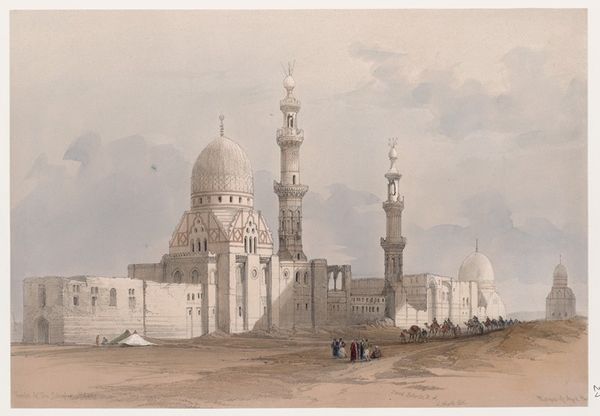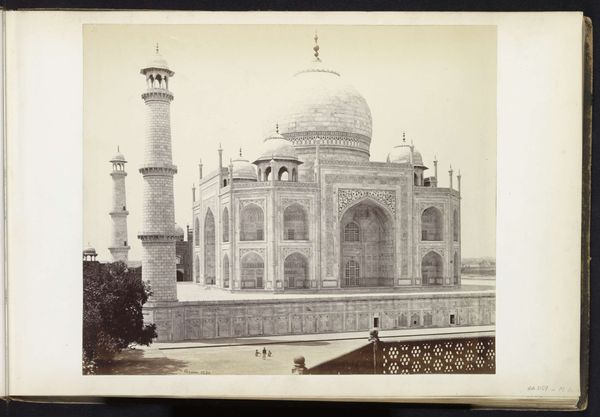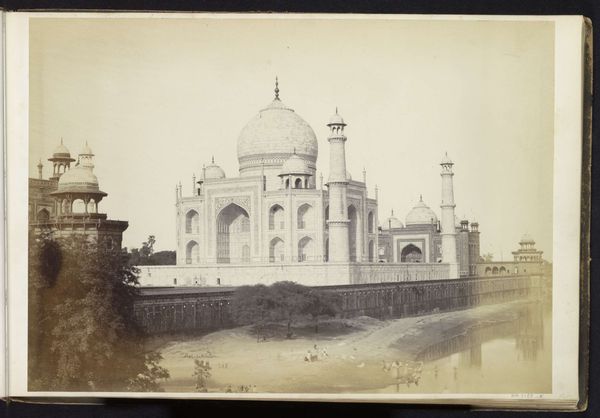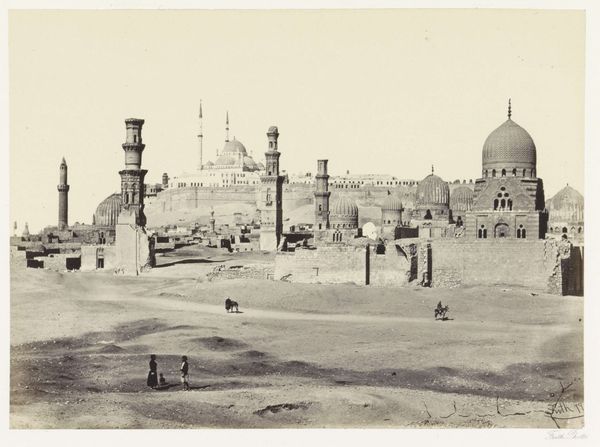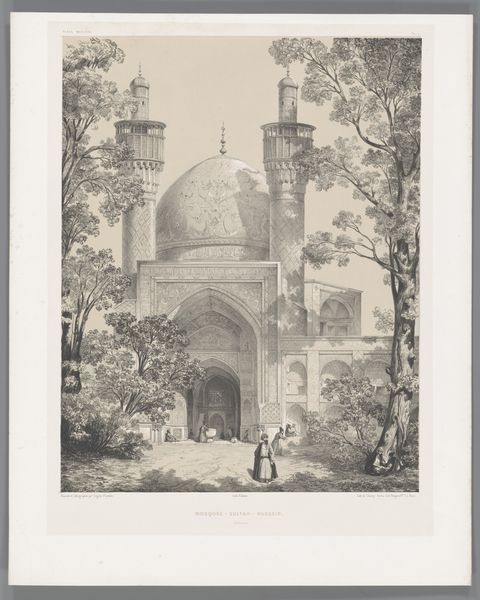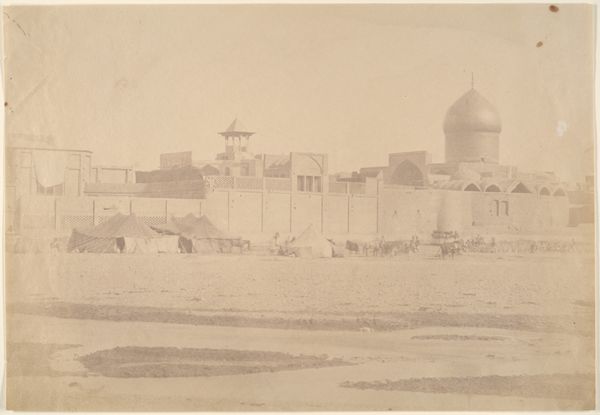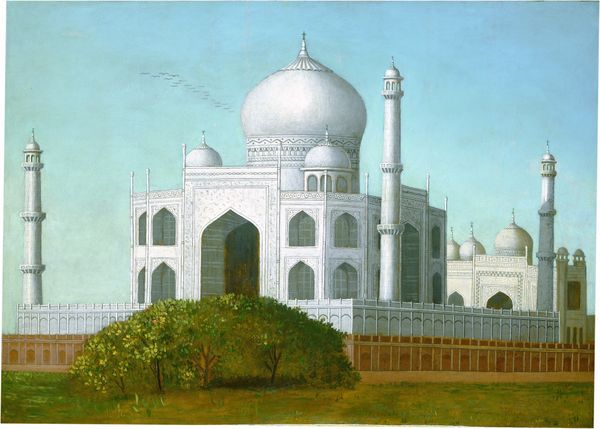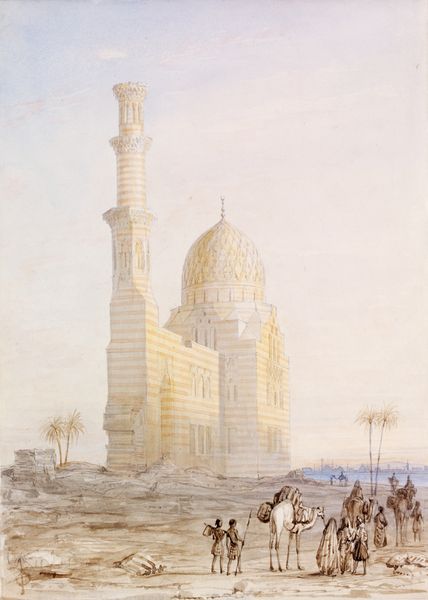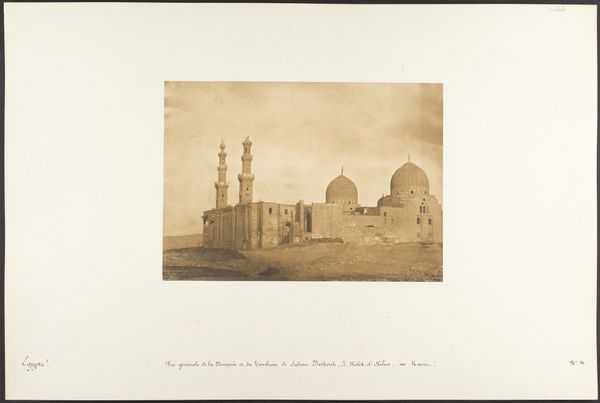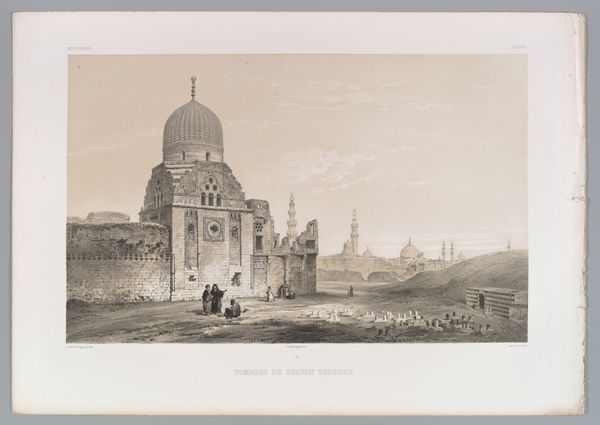![Tombs of the Memlooks [Mamelukes], Cairo. by David Roberts](/_next/image?url=https%3A%2F%2Fd2w8kbdekdi1gv.cloudfront.net%2FeyJidWNrZXQiOiAiYXJ0ZXJhLWltYWdlcy1idWNrZXQiLCAia2V5IjogImFydHdvcmtzL2Y4OTdhNjcyLTIzZGMtNDZkZS1iMzBiLTMwZjE3ZjRkOTBjOS9mODk3YTY3Mi0yM2RjLTQ2ZGUtYjMwYi0zMGYxN2Y0ZDkwYzlfZnVsbC5qcGciLCAiZWRpdHMiOiB7InJlc2l6ZSI6IHsid2lkdGgiOiAxOTIwLCAiaGVpZ2h0IjogMTkyMCwgImZpdCI6ICJpbnNpZGUifX19&w=1920&q=75)
painting, watercolor
#
painting
#
landscape
#
watercolor
#
cityscape
#
islamic-art
#
watercolor
Copyright: Public Domain: Artvee
Curator: I find this view of the Tombs of the Memlooks in Cairo quite breathtaking. David Roberts executed it as a watercolor painting sometime between 1846 and 1849. What is your initial reaction? Editor: Bleak beauty comes to mind. The muted tones create this pervasive sense of desolation. But even more so, there's something deeply satisfying about how the horizontal lines of the structures intersect with the stark verticals of the minarets. Curator: Indeed. Roberts was deeply engaged in representing the realities of labor and production, especially considering the orientalist context. His process, turning on-site sketches into polished watercolors back in his studio, is inherently linked to market demands and the consumption of exoticized imagery. The romantic allure here is undeniable, shaping how viewers understand the work involved in creating these objects, both the architectural marvels and Roberts' paintings. Editor: While I acknowledge that, the architecture dominates the picture. Note the masterful employment of receding lines to enhance the perception of depth and spaciousness. It gives me a structured harmony through repetitive shapes: domes, arches, rectangles... Curator: Those shapes symbolize cultural dominance of a particular labor force over centuries. We have to see beyond aesthetic formalism. Roberts depicts more than just architectural forms; he showcases how political powers built and utilized this necropolis, underlining a system dependent on craft production. Editor: Possibly. But even without the context, I'd see an image of serenity and contemplation. The near-monochromatic palette unifies the structures and landscape, lending it an air of timelessness. He’s using color, or lack thereof, to manipulate mood and structure a visual experience. Curator: I understand that, but think how the consumption of such art contributes to Western constructs and fantasies, transforming realities of a foreign population to marketable stereotypes. Editor: And maybe his technique also reflects that reality? The muted colors, precise lines, the very labor involved in rendering these monuments mirrors the care in the original architecture itself, irrespective of any economic critique. It is as much an experience as a commentary. Curator: Well said, It's enlightening how our differing approaches reveal varied depths of an artwork! Editor: Agreed. There’s so much embedded in even deceptively "simple" structures when we really choose to examine.
Comments
No comments
Be the first to comment and join the conversation on the ultimate creative platform.
